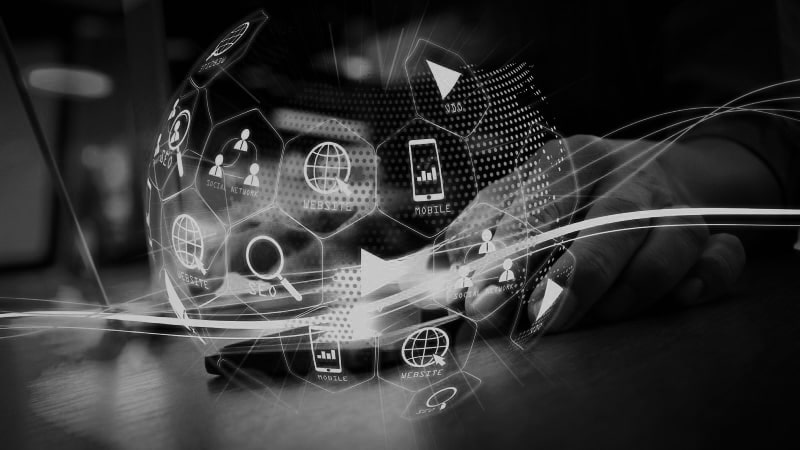Social Advertising
How to turn a Prospect into a loyal Brand Lover
Published January 2022

Multiple icons show different advertising possibilities
The most common reason for bad experiences with Facebook Ads is the One-Fits-All principle. A campaign that directly try to serve the business goal. This may work in individual cases. But usually the process requires some preliminary work. Especially if you are not only looking for one-time purchases.
Facebook has 2.7 billion users. In 2019 alone, $1.6 billion was spent on advertising on the platform. The market is highly competitive. To be successful here, you need a solid strategy.
The average website conversion rate is 1.8%. In other words, 98.8% of visitors are not ready to make a purchase. Not yet. This is because the typical buying process consists of several phases. Get to know these phases and accompany your potential client optimally on your customer journey.
Here are the 4 phases of the typical buying process:
1. Awareness
All prospects usually start here. They do not know your company or product. This needs to be changed.
To illustrate this, imagine a potential client. The espresso machine of him just broke down. He is thinking about his options: repairing it, buying it again or even switching to a capsule machine. In other words, he is not yet ready to buy a new espresso machine.
Our goal is to attract the attention of potential clients and qualify them for further steps in the sales funnel.
In the aware phase, we use wide range target groups. Lookalike target groups are ideal.
The advertising material should be attention-grabbing. Video ads work best at this point. Image ads also achieve good results.
2. Consider
The previous phase allows us to qualify potential clients. We build on the subliminally expressed interest by creating retargeting groups. Using signals from the awareness phase such as video views up till 95% or website visitors.
In the consider phase, our goal is to further supply the refined target group with information about the product or service. The potential client should remember it and think about buying/closing etc.
Classically, link ads to the corresponding product page can be used here. However, other formats such as a lead ad can also be considered. Whit this you can initiate a subscription to a newsletter, offer consultation appointments or even informational material.
3. Convert
The client is ready to make a decision. Last details are checked, product details and prices are compared. We link into the final decision-making process via the convert phase. It is time to turn a prospective customer into a customer.
At this point we optimize specifically for sales. Our pre-qualified target groups are a great benefit here.
To reach them with the most suitable format we need to match product/service to format. The best format depends strongly on the product/service. Dynamic-product, event, local-store-traffic, product-tag-to-store or classic conversion ads prove themselves best at this funnel step.
4. Love
Satisfied clients are the best marketing tool. Of course, it is our aim that our clients are satisfied with the product or service anyway. The Love-approach just offers another opportunity to increase the chances of a recommendation or a returning client.
Its highly recommended to use a more personal communication to address your customers. These customers can be reached via a custom audience with special advertising materials.
A good working approach could be an Offer Ads with personalized voucher code on the next purchase and/or for acquaintances to pass it to. You can also use this step to generate some more useful information by using lead ads for ratings or feedback.


